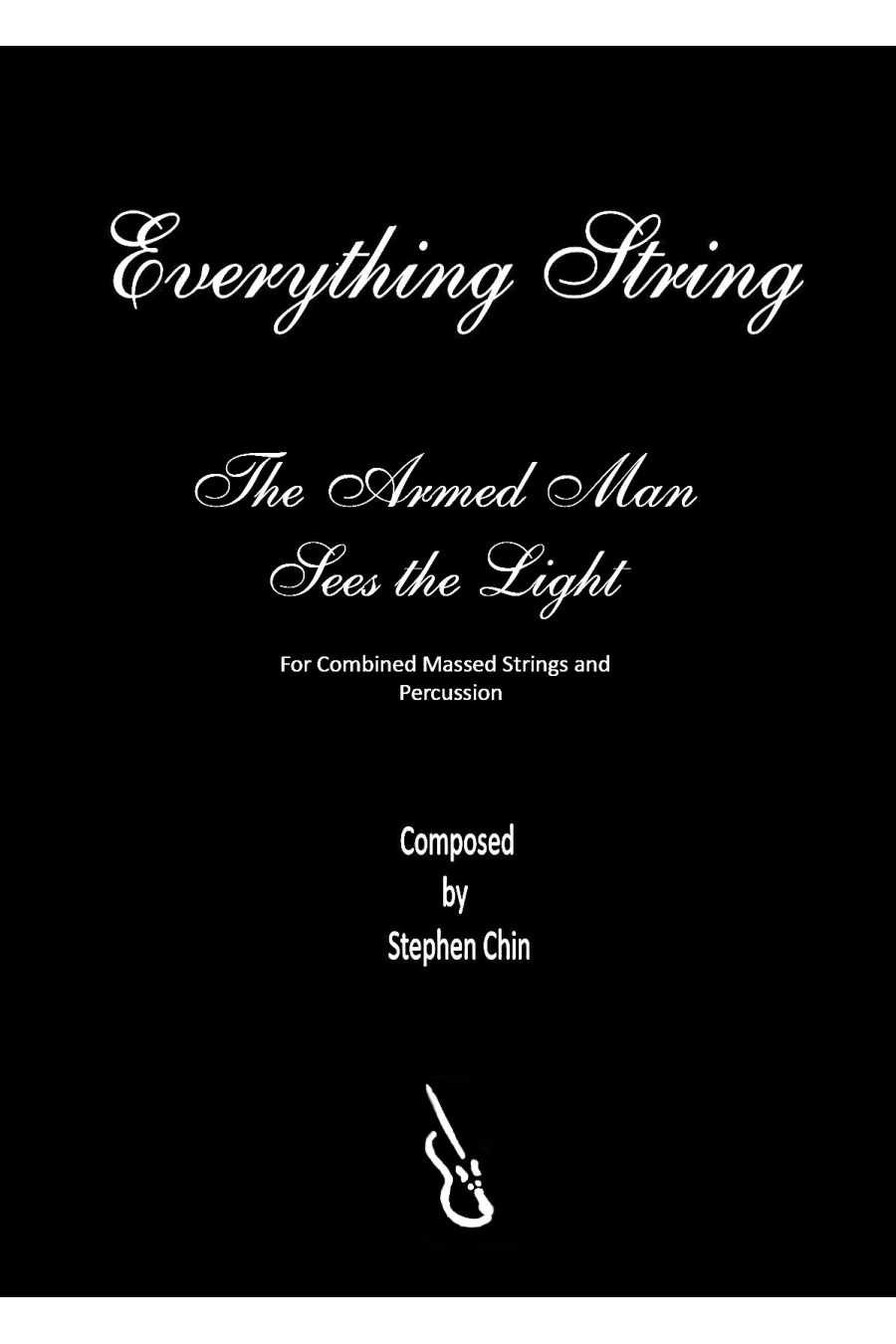

Ideal for a festival orchestra with players at different levels, this piece is based on the medieval melody "L'Homme Arme", depicting a sword-wielding warrior. The middle section features a violin solo as a lullaby reflecting the armed man's war experiences. The final section celebrates the armed man walking in the light of peace and liberty with the South African song "Simbayama".
For 4 string orchestras and untuned percussion - Grade 3.5, 2, 1.5 & 1
In this musical composition, festival orchestras consisting of musicians of varying levels of expertise can come together and showcase their talents. The piece is composed for four-string orchestras and un-tuned percussion and draws inspiration from the mediaeval tune "L'Homme Arme", which tells the tale of a warrior brandishing his sword. The middle section of the composition features a beautiful violin solo, where the warrior, now quiet and contemplative, reflects on his experiences on the battlefield. The final section is based on the South African song "Simbayama" and is a joyous celebration of the warrior walking towards peace and liberty, leaving behind the darkness of war.
For 4 string orchestras and untuned percussion - Grade 3.5, 2, 1.5 & 1
The Ming Dynasty (1368–1644) was a remarkable period in China’s history, characterised by extensive exploration and the expansion of trade routes to Europe, Africa, and the Indian Ocean, which resulted in a nearly doubled population. The Imperial Court became a hub for the arts, showcasing a diverse range of talents in literature, music, painting, sculpture, and ceramics. Artistic representations often depicted the calming lotus and dynamic horses, symbolising both serenity and strength, while music featured sustained notes and energetic rhythms that echoed these themes.
1. Lotus
2. Imperial Horses
The legend of Excalibur is an exciting tale that captivates young minds. King Arthur's sword, Excalibur, emerges from the waters, followed by a sword dance. The mysterious theme reappears before a thrilling finale. Written for advanced and elementary players, it's a fantastic piece for a string festival or an advanced orchestra.
For String Orchestra Grade 3 & 1.5 (advanced and optional elementary strings)
Two Italian Baroque masterpieces in contrast - Sarabande and Gigue. Simple melody with suspensions in Sarabande, orchestra showcases string crossings and quaver figuration in Gigue.
For String Orchestra Grade 2.5
The Swans of Lir is an Irish legend about young children turned into swans by dark forces. The melody and accompaniments in "The Lake" reflect their helplessness, while "The Rejoicing" celebrates their eventual transformation back into children. The piece is scored for strings, recorders and percussion and is perfect for large concerts or festivals.
Grieg's music is rooted in Norwegian folk songs. The "Watchman's Song" has a ghostly section conveyed through tremolo. A melancholic waltz follows, evoking a troll's cave. The contrast of keys and playing styles can refine any ensemble.
1. The Watchman's Song
2. Waltz
For String Orchestra Grade 2.5
This is an excellent intro to Early Music. Arbeau's second piece was later used in "Capriol Suite" by Peter Warlock. To add authenticity, improvise and add bass drum or tambour parts.
1. Bransle
2. Pavan
3. Ballo Furlano
For String Orchestra Grade 1.5
Originally written for wind ensemble and later arranged for pianoforte, these charming movements have been carefully placed to give the sense of a fully integrated work. Some elements of this work are similar in vein to Mozart's famous "Eine Kleine Nachtmusik." Advanced intermediate players will enjoy the challenges of spiccato quavers, martele crotchets, measured tremolo, and lifted upbows, which are a must for developing precision and clarity in a more advanced string ensemble.
For String Orchestra Grade 3